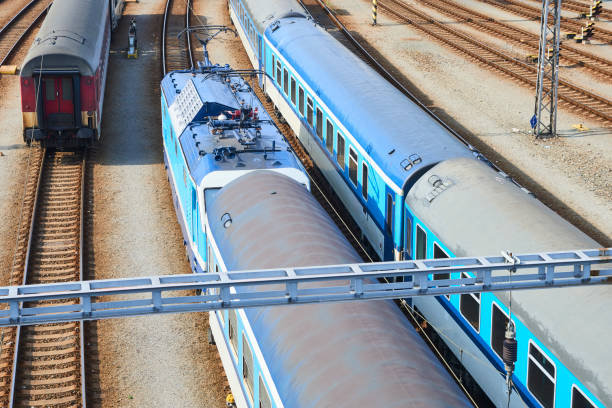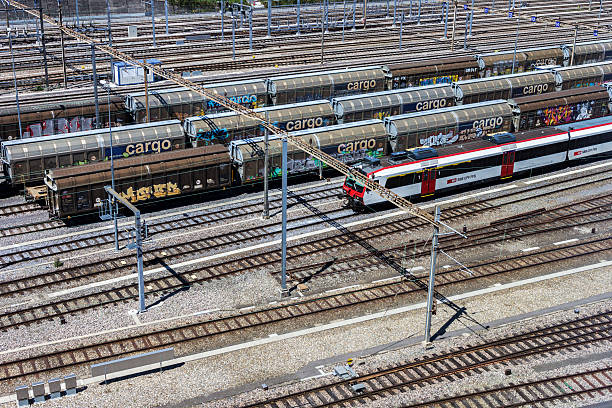“We [High Speed 2 (HS2) Ltd] have an operational railway that is seven to eight years away. It is challenging to predict what we might be capable of doing at that point,” says HS2 Ltd asset manager for civil engineering infrastructure Mark Evans. Arcadis head of structures asset management Sara Subtle adds that the way asset owners currently seek funding, “having to bid now for the budget we are going to get to in five years”, is not allowing the sector to be as flexible to deploy the newest technologies. Data-driven decisions Over the years asset owners have been trying to keep up with the pace of technological evolution, investing heavily in tools for data collection. Despite this investment, the industry experts who took part in the round table believe that there are still issues with data-driven decision making. Even though the technology that could enable infrastructure asset owners to use data to help them make decisions is available, the quality of data is not good enough, says Andy Watts Consulting Partnership director Andy Watts. One problem with data-driven decision making identified by Rocha is the combination of legacy systems, such as the Ellipse asset management system, and data acquisition mechanisms, for example Light Detection and Ranging remote sensing systems. He explains that the legacy systems are unable to fully process the level of detail on assets captured by the new data acquisition technologies as well as certain data formats like video footage. “This leads to incomplete asset information, which then makes it necessary for people to use their judgment, experience and knowledge to make a decision,” he adds. Pike has also identified problems with the current methods of data collection that impact analysis. “In terms of asset failure, one of the things we found challenging was being able to pin down its root cause,” he says. He explains that having the right data would allow for an in-depth analysis of the cause of failure. That insight could be used to stop similar events in the future.

New Approach
Improved and more targeted data collection will allow for the adoption of a performance-based approach in rail asset management and maintenance, which could positively influence decision making. Network Rail special projects manager for western route Paul Gardiner says that this approach provides greater clarity to asset management teams about where the maintenance budget should be spent. “It gives you the insight to spend it where performance gives you the bang for the buck. It is about making sure that you’ve gone and done the [maintenance] work on the assets that are critical to the delivery of the service,” he says. The ability to priorities work on critical assets should mean that fewer failures will disrupt services. Arcadis global service director asset management Peter Dour Lein says adopting a performance-based approach would require cultural change within an organization. He adds that culture change could take time. He explains that in the Netherlands it took the rail asset owner more than a decade from the first performance-based contract to the roll out of the approach to its entire organization. Adopting a performance-based approach could also require changes to the way the whole sector operates. Rocha says that the fact that the rolling stock and infrastructure are separate in terms of asset management could be an issue. “If you don’t integrate them, you are going to have a problem because there is a mismatch of information,” he says. Network Rail head of asset management and planning Milind Joshi adds that everyone has a role to play to make rail asset management and maintenance more efficient, “but it has to start from the asset manager”. Joshi adds: “It is about reducing the number of systems we have and investing in the right system, which will drive the data [collection and analysis]. Giving decision support tools to the people on the ground will enhance their work in terms of productivity and that will drive that much required change.” Pike says that the rail sector should have a strategy with a long term vision for improving operational performance, but stresses that it should take “manageable incremental steps” .Arcadis global service director asset management Peter Dour Lein says adopting a performance-based approach would require cultural change within an organization. He adds that culture change could take time. He explains that in the Netherlands it took the rail asset owner more than a decade from the first performance-based contract to the roll out of the approach to its entire organization. Adopting a performance-based approach could also require changes to the way the whole sector operates.

Rocha Says That The Fact That The Rolling Stock And Infrastructure.
are separate in terms of asset management could be an issue. “If you don’t integrate them, you are going to have a problem because there is a mismatch of information,” he says. Network Rail head of asset management and planning Milind Joshi adds that everyone has a role to play to make rail asset management and maintenance more efficient, “but it has to start from the asset manager”. Joshi adds: “It is about reducing the number of systems we have and investing in the right system, which will drive the data [collection and analysis]. Giving decision support tools to the people on the ground will enhance their work in terms of productivity and that will drive that much required change.” Pike says that the rail sector should have a strategy with a long term vision for improving operational performance, but stresses that it should take “manageable incremental steps”. Arcadis global service director asset management Peter Dour Lein says adopting a performance-based approach would require cultural change within an organization. He adds that culture change could take time. He explains that in the Netherlands it took the rail asset owner more than a decade from the first performance-based contract to the roll out of the approach to its entire organization. Adopting a performance-based approach could also require changes to the way the whole sector operates. Rocha says that the fact that the rolling stock and infrastructure are separate in terms of asset management could be an issue. “If you don’t integrate them, you are going to have a problem because there is a mismatch of information,” he says. Network Rail head of asset management and planning Milind Joshi adds that everyone has a role to play to make rail asset management and maintenance more efficient, “but it has to start from the asset manager”. Joshi adds: “It is about reducing the number of systems we have and investing in the right system, which will drive the data [collection and analysis]. Giving decision support tools to the people on the ground will enhance their work in terms of productivity and that will drive that much required change.” Pike says that the rail sector should have a strategy with a long term vision for improving operational performance, but stresses that it should take “manageable incremental steps”. Arcadis global service director asset management Peter Dour Lein says adopting a performance-based approach would require cultural change within an organization. He adds that culture change could take time. He explains that in the Netherlands it took the rail asset owner more than a decade from the first performance-based contract to the roll out of the approach to its entire organization. Adopting a performance-based approach could also require changes to the way the whole sector operates.
Rocha Says That The Fact That the Rolling Stock And Infrastructure.
are separate in terms of asset management could be an issue. “If you don’t integrate them, you are going to have a problem because there is a mismatch of information,” he says. Network Rail head of asset management and planning Milind Joshi adds that everyone has a role to play to make rail asset management and maintenance more efficient, “but it has to start from the asset manager”. Joshi adds: “It is about reducing the number of systems we have and investing in the right system, which will drive the data [collection and analysis]. Giving decision support tools to the people on the ground will enhance their work in terms of productivity and that will drive that much required change.” Pike says that the rail sector should have a strategy with a long term vision for improving operational performance, but stresses that it should take “manageable incremental steps”.


Recent Comments